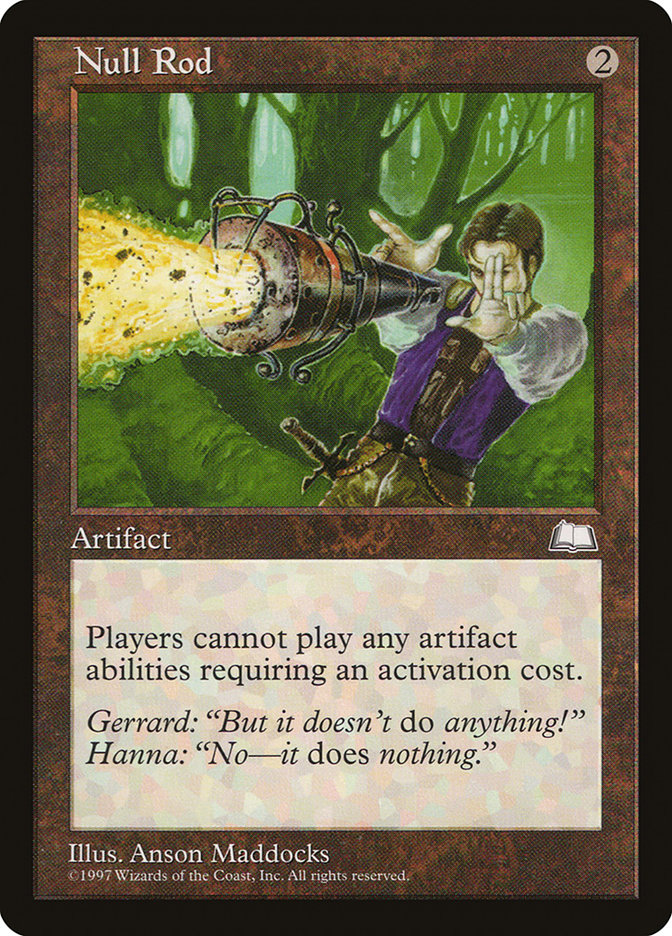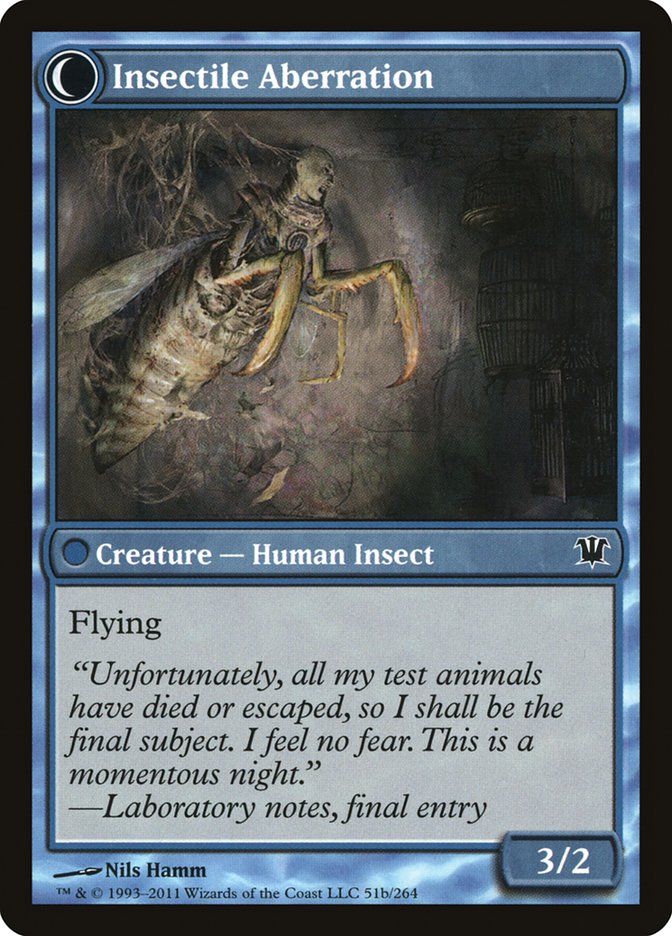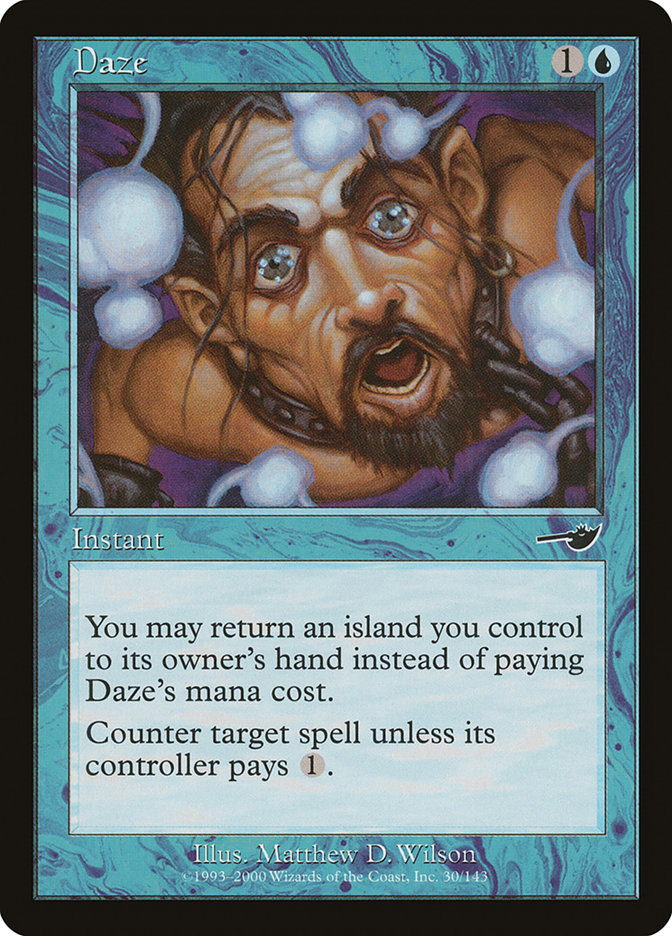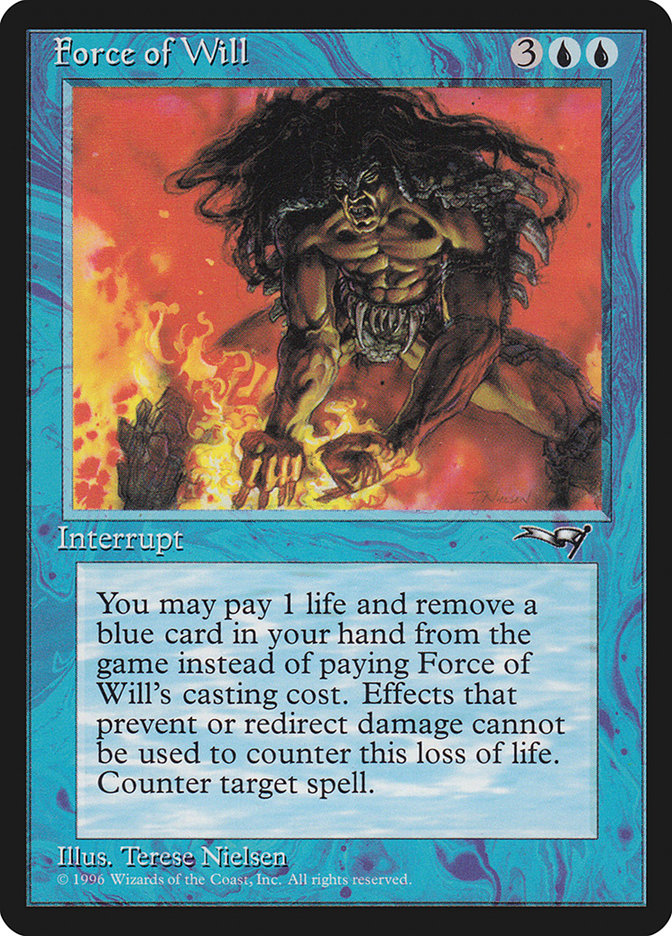After weeks of playing nothing but Theros Block Constructed and Limited, I can safely say that I am sick to death of combat tricks and Sylvan Caryatid. I
haven’t played a sanctioned match of Standard in over a month, and I haven’t had the pleasure of casting Brainstorm since the last StarCityGames.com
Invitational.
This weekend in Indianapolis should put me back on even keel.
Today we’re going to be focusing on Standard and Legacy, and what I’m (probably) going to play in both Opens. If you’re a fan of casting Thoughtseize and
Brainstorm, then we’re going to get along just fine. Otherwise…well, I guess I can just make jokes or something? I dunno. Stay tuned!
Standard Actual Usuals
If you’ve paid any attention to Standard over the last few weeks, you’ll see a common trend.
…?
What? That’s the end of the sentence.
Oh, you wanted me to explain that trend? Well…all right, I suppose. But it is a fairly common theme, and you should feel pretty dumb if you don’t see it.
Are you ready?
*prepares bullhorn*
Nothing has changed! All of the same decks keep doing well, and CVM somehow keeps beating people with the worst deck in the format! If he just played
Thoughtseize, he would probably be able to shave off that stupid, gigantic Viking beard.
*turns off bullhorn*
All right, so maybe Jund Monsters isn’t the worst deck in the format, but it doesn’t actually do anything. In fact, some might call it
a…
But in all seriousness, Standard is a diverse field. While many of the decks have similar cores, your options are virtually limitless for improving your
deck based on the expected metagame. With Temples and shock lands in all shapes and sizes, it is possible to splash any color in any deck. But just
remember that adding a color to your deck needs to give you something unique.
This is why I don’t actually like Jund Monsters.
For the most part, you’re slowing your deck down, or dealing yourself a considerable amount of damage, so that you stay at the same speed as a one- or
two-color deck. If you’re adding another color just to play removal spells, you should probably just be trying a similar strategy in the colors that have
those removal spells. Jund Monsters does have better threats than Black Devotion, but you could literally kill your opponent with a butter knife if you’re
able to pick them apart with all of your disruption and removal.
Creatures (25)
- 3 Scavenging Ooze
- 3 Ghor-Clan Rampager
- 4 Elvish Mystic
- 4 Polukranos, World Eater
- 4 Sylvan Caryatid
- 4 Stormbreath Dragon
- 3 Courser of Kruphix
Planeswalkers (7)
Lands (23)
Spells (5)

What I do like about Jund Monsters is that the creature base feels strong. Stormbreath Dragon and Polukranos are powerful spells that can singlehandedly
steal games if your opponent doesn’t have the right answer, and being proactive with your midrange deck will generate a lot of wins when your opponent
stumbles. The problem is that you’re making your deck much worse against aggressive decks by adding removal spells that are supposed to be good against
those same decks.
I do understand the draw of Dreadbore and Abrupt Decay, as they are removal spells that can interact favorably with an opposing Planeswalker, Detention
Sphere, or Underworld Connections, but you shouldn’t be worrying about that stuff. Against the slower decks, you’re playing the aggressive role, and your
threats are pretty tough to deal with. Domri Rade and Xenagos, the Reveler shine like a baby’s bottom against control strategies. Why would you care if
they’re trying to draw an extra card when you can just kill them instead?
I was a huge fan of G/R Monsters at Pro Tour Theros and immediately after when people were playing Flesh // Blood, and I’m even more of a fan of playing
Ghor-Clan Rampager with Boros Charm in general, but now people are playing Courser of Kruphix alongside one of the most aggressive combat tricks in
history! Why!? The fact that the deck has two very different game plans is a bit awkward, but it does open up your options a bit. Courser is much better in
the three-color version as it helps alleviate the pain from your manabase, while also having a solid body to block against the aggressive strategies, but
I’ve said it before and I’ll say it one more time:
Just punch them in the face with your gigantic idiot creatures and be done with it!
As for what I’d play? Well, I know it’s pretty boring, but you have to give credit where credit is due. Charlie Rinehart’s B/W Midrange deck is awesome.
Creatures (15)
- 3 Pack Rat
- 4 Desecration Demon
- 1 Obzedat, Ghost Council
- 1 Sin Collector
- 3 Blood Baron of Vizkopa
- 3 Lifebane Zombie
Planeswalkers (2)
Lands (26)
Spells (17)
- 4 Thoughtseize
- 2 Underworld Connections
- 2 Ultimate Price
- 4 Hero's Downfall
- 1 Whip of Erebos
- 2 Bile Blight
- 2 Banishing Light
Sideboard

A thing of beauty. Brian Braun-Duin would be proud.
If Thoughtseize into Pack Rat doesn’t get you going, then I’m not sure what else will. I’ve talked about black decks in Standard at length already, but
Charlie’s take on the B/W version is pretty sweet. Banishing Light gives you some game against opposing Underworld Connections, Detention Spheres, and
every other non-Stormbreath Dragon creature in the format (something you need out of a control deck). I know I’ve been advocating the use of Gray Merchant
of Asphodel and quad Underworld Connection in this archetype, but that might not be necessary anymore.
With the downfall of Blue Devotion, Gray Merchant of Asphodel isn’t needed nearly as much. Against basically every other archetype in the format, Blood
Baron of Vizkopa is a much bigger threat. While you can’t steal games out from under people like with ol’ Gary, you can grind them out in a few attack
steps, much like the deck is designed to do in the first place.
I’m not a huge fan of the removal suite in Charlie’s list, but it isn’t all that bad. With Banishing Light hanging around, I would be all for cutting a
copy (or maybe two) of Hero’s Downfall so that you can play some cheaper removal spells. While they are occasionally worse, you need to be able to interact
with your opponent in the early turns of the game. If your first play against an aggressive deck is Hero’s Downfall when you’re on the draw, you probably
aren’t going to be winning that game. It is easy to get overwhelmed in this format!
You could probably build the mana base to play Nightveil Specter over Lifebane Zombie, but it will get pretty awkward when your fifth or sixth land comes
into play tapped when you’re trying to cast you game-breaking spells, so it probably isn’t worth it. Plus, if people start playing Blood Baron of Vizkopa
again, then Lifebane Zombie is actually good in the mirror! I don’t mind a few Plains here, as it will make your five- and six-drops easier to cast on
time, though Plains is a pretty bad land on the first few turns of the game.
Ultimate Price seems a little lackluster outside of the mirrors, but it’s probably fine in a world full of Desecration Demons and Stormbreath Dragons. I
love me some Doom Blade, but I don’t think I could bring myself to play it maindeck until Pack Rat and company leave the format. It is disastrous to go
into any black mirror and have Doom Blade instead of Ultimate Price. Pack Rat will just eat you alive (because, you know, that’s what a swarm of rats will
do)!
Since I haven’t been putting much time into Standard lately due to a high quantity of tournaments featuring other formats, I don’t have any sweet brews to
give you, but that should all be changing in the next few weeks. For the foreseeable future, Standard is going to take up most of my testing time.
.
..
…
Oh, right. Now I get to talk about Brainstorm!
LOL Brainstorm
Maybe I’m wrong, but Brainstorm has to be the biggest joke left for Legacy. It has clearly been a dominant factor for so long, which mostly leads me to
believe that they’ll never ban a card in Legacy again. Either that, or they know that banning Brainstorm would cripple Legacy, making the format much less
skill-intensive and also much less fun.
A one-mana spell that can be played on so many different turns, and in so many different ways, is fantastic when you’re trying to showcase just what people
can do. It tends to make its way into decks that probably have no business playing it, but the mana in Legacy is just too good not to.
Every single time I go into a Legacy tournament and I’m not playing Brainstorm, I immediately regret it when I play against an opponent who gets to cast
it. They just have so many more options than me, not to mention it is virtually impossible to flood out. Yes, there are times where you get
“Brainstorm-locked,” but that is the “danger” of playing the card incorrectly (or desperately).
No, I don’t honestly think anything should be banned in Legacy. Most decks are fairly even on power level, and there are a ton of fringe strategies that
gain ground based on what decks are dominant at any given time. But at the moment, this little jerk is wrecking up the place.
The secret behind the success of Delver is similar to why it was good in Standard a few years ago. Having cheap manipulation means you are generally paying
one mana for a 3/2 flier. At the same time, your cheap manipulation finds other means of disruption. In Standard, that meant Mana Leak, Vapor Snag, and a
ton of other cheap instants and sorceries that helped you build a huge advantage on tempo. Being able to spend less mana on your spell to deal with your
opponent’s more expensive spell is why Delver continues to thrive.
As far as cheap spells go, nothing beats “free.”
At least we don’t have to deal with Mental Misstep, amirite?
But seriously, Daze and Force of Will are the early lines of defense against degenerate combo decks. If you’re able to put a reasonable amount of pressure
on your opponent through Delver, Tarmogoyf, or some other cheap threat while having cheap or free spells to keep your opponent on the back foot, you will
win the game. It might not be pretty, and it might not always be fun for the opponent (or you, for that matter), but it will get the job done.
Clearly, the strategy has some merit.
I’ve been an advocate of Delver of Secrets for a long time across multiple formats, but today I’m going to tell you something I’ve never told anyone:
I hate secrets, and I sure as hell hate it when people delve them.
I don’t enjoy playing Delver decks in Legacy because they put a huge emphasis on “screwing” your opponent out of the game, and sometimes that just isn’t
possible. I can’t tell you how often I am sitting on a Wasteland or two and my opponent just leads with Plains or Forest. It is incredibly frustrating.
Your deck is full of soft counters and removal spells that are often blanks depending on the matchup. But when you draw the right threats and right
reactive spells, it is nearly impossible to beat.
On the same note, Deathrite Shaman decks couldn’t care less about an opposing Wasteland. If you take a turn while you’re behind to hit your opponent with a
Wasteland, it is basically like they got to Wasteland you for free, and that is not a spot I want to be in. There are arguments to be made for using
Wasteland aggressively, even when you’re behind, because you can occasionally catch your opponent without another land. This effectively buys you enough
time to invalidate the turn you lost, while also having a free chance at winning the game on the spot.
But it is very risky.
I enjoy Legacy because it allows you to do powerful things that you don’t often get to do in other formats. Cards like Show and Tell and Sneak Attack, not
to mention the million other combos, showcase exactly what Legacy is all about. The other decks like Delver or Deathblade or even Miracles try to prey on
the combo decks with cheap threats and cheaper disruption, and that’s where all the fun begins!
Much like Standard, I generally want to be the guy with all the threats instead of all the answers. While the answers in Legacy are great, the opponent
still has to have them. And if they don’t have the right answer at the right time for the right threat, they’re going to lose.
But the dance makes it all worth it, and I want to take the lead.
Creatures (8)
Planeswalkers (2)
Lands (19)
Spells (31)

Doesn’t this deck just look fresh ta death? But I’m sure you’ve got a few questions for me. Like, “Hey Todd, why are you playing Vandalblast?” Well, I can
give you a long answer and a short one. The short answer is “because it is ******** gas.”
The long answer is that Vandalblast is a cheap way to deal with Pithing Needle or Ensnaring Bridge, two cards that give Sneak Attack some headaches. There
are a lot of Painter’s Servant decks running around right now, and having a way to beat their Ensnaring Bridge is important. Jace, the Mind Sculptor is not
a viable win condition against seven or eight Pyroblast effects.
The longer answer continues with the fact that Vandalblast is the best modal card for the deck because your opponent could have multiple artifact effects
that are disrupting you, and drawing a way to kill them is pretty sweet. I’ve looked at almost all of the options available to me, including Crash and
Pulverize, both free ways to do the job, but the natural costs are too high. Vandalblast only costing one mana to deal with something is exactly what you
want, with the upside of being able to overload it.
Echoing Truth is a similar spell in that it can deal with multiples of the same card that are messing up your gameplan. The range for disruptive permanents
is Legacy is quite large, so having a bounce spell alongside Vandlblast gives you outs to virtually anything. Singletons are awesome in a deck where you
have so much manipulation, and they’re even better when they can have a significant impact on the game at multiple points. I’ve also considered Wipe Away,
but I’m not sold that Split Second is better than paying less mana while also having the ability to bounce two permanents with the same name (or a million
goblin tokens).
The same goes for Boseiju. The card is awesome, but situational, which is why you only play one copy. It is mostly for decks featuring a lot of
counterspells (big shocker there), but probably isn’t terrible against Delver decks either. Obviously Wasteland is an issue, as well as having to pay two
life per use, but resolving one Show and Tell is all you need to do against them. Plus, boarding in a land against a Wasteland deck isn’t so bad either,
even if it slowly kills you.
As for the Delver matchup as a whole, I love the plan of Pyroclasm and Blood Moon. It is incredibly difficult for them to beat Blood Moon, meaning they’ll
have to use their counterspells on it early or probably lose on the spot. Pyroclasm is also a big game against the Stoneforge Mystic and Young Pyromancer
variants, though it is straight-up terrible against Tarmogoyf.
In previous versions, Leyline of Sanctity was a way for you to protect yourself from discard effects. Jund and BUG decks could eat you alive if you didn’t
have a way to protect yourself, but maybe the most important part was keeping you from losing to Liliana of the Veil. Unfortunately, you can’t really
afford to mulligan into Leyline of Sanctity against a deck forcing you to discard your hand, because you’ve effectively discarded two cards by mulliganing
and then putting the Leyline into play. Your resources are stretched thin as it is, but the truth of the matter is that you just don’t need it.
And as for the maindeck, Patrick Chapin said it best with “Jace, the Mind Sculptor, better than all.” I know it is difficult to protect, but there aren’t
too many decks in Legacy that win by attacking with small dorks. You generally win or lose by a landslide, and Jace is a card advantage engine that most
decks will be forced to counter. I can’t tell you how good it feels to cast Jace on Turn 2, even if you are burning Lotus Petal to do it. He slices, he
dices, he even takes your mom out to dinner after the tournament is over. And you can bet your ass you’ll wake up the next morning to the smell of bacon
and eggs.
All jokes aside, Sneak and Show is one of the best (and most powerful) decks I’ve ever had the pleasure of playing in a tournament. There are awkward
draws, but you have all the tools at your disposal to turn those draws around. And I don’t know if you’ve ever drawn seven cards with Griselbrand before,
but it does get me a bit… *tingly.* What I do know is that Legacy has some absurd decks and interactions that control or tempo decks aren’t always able
to handle. That’s why I prefer to be proactive instead of reactive. Well, that, and the fact that I would rather do anything else than play Counterbalance.
When it comes to Legacy, take the wheel.





